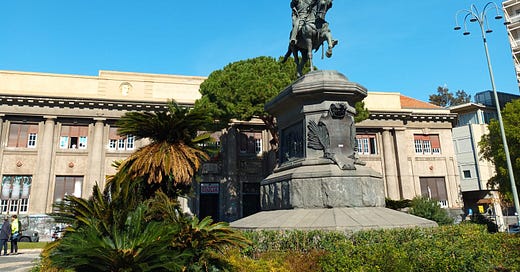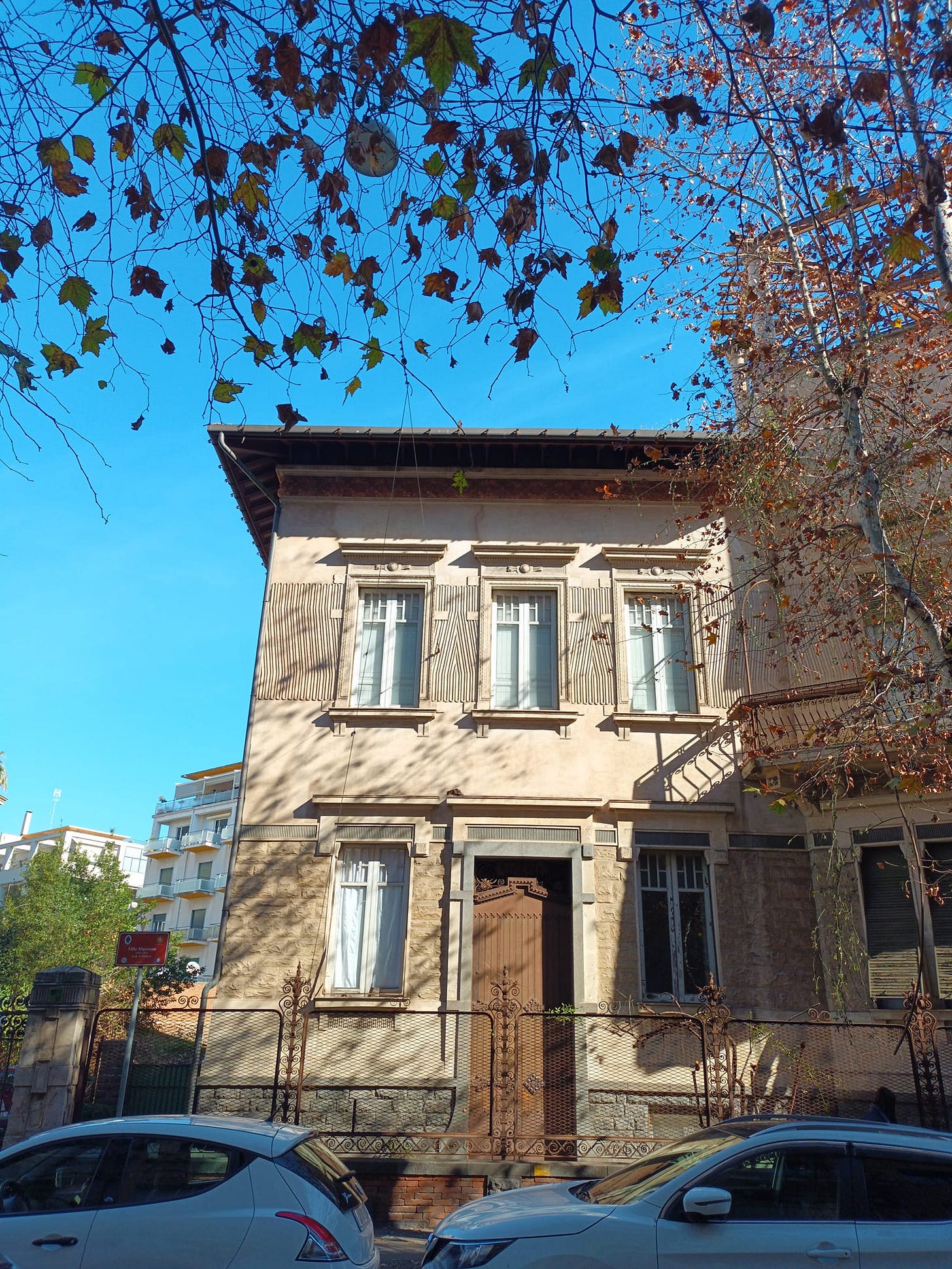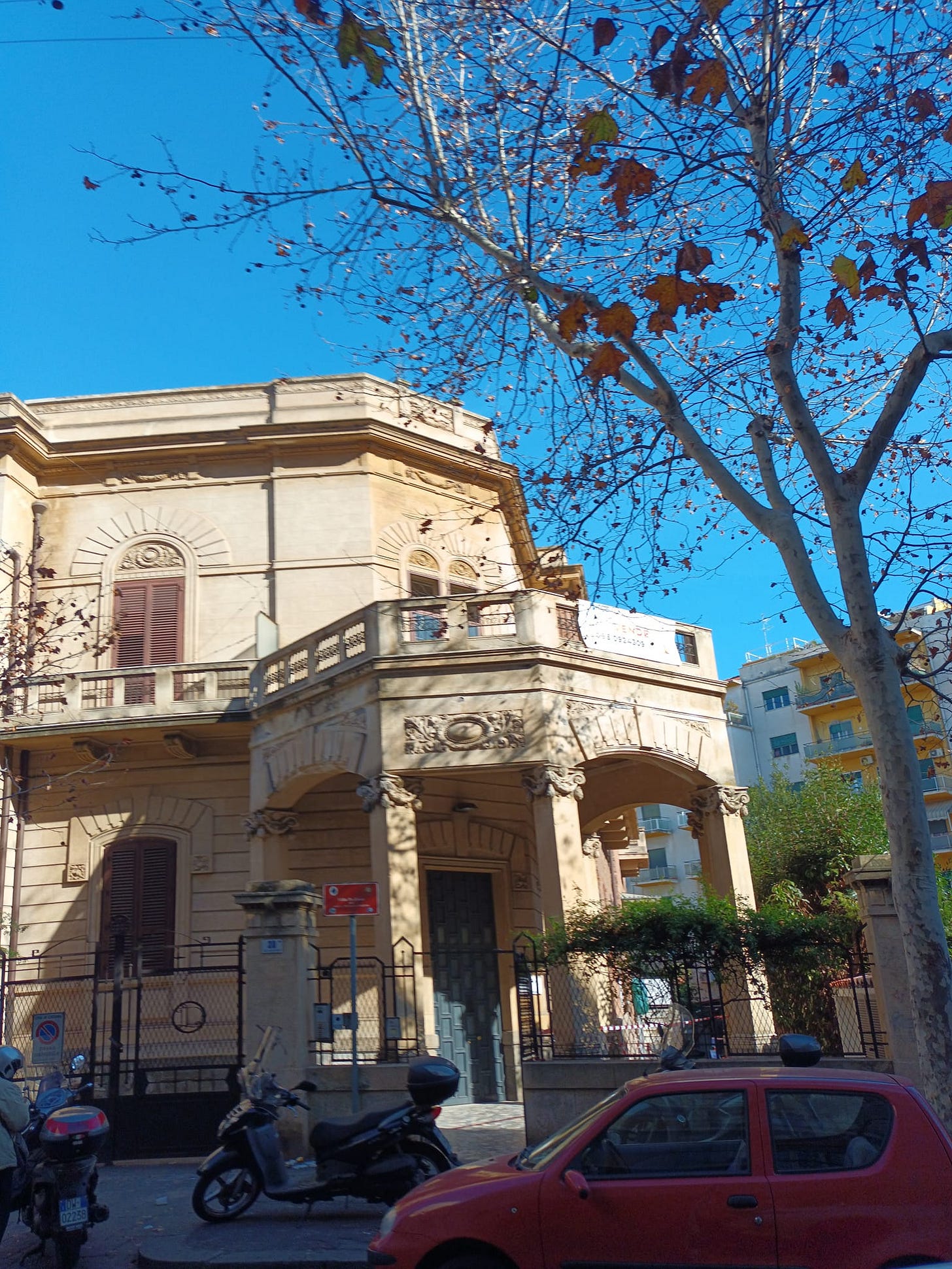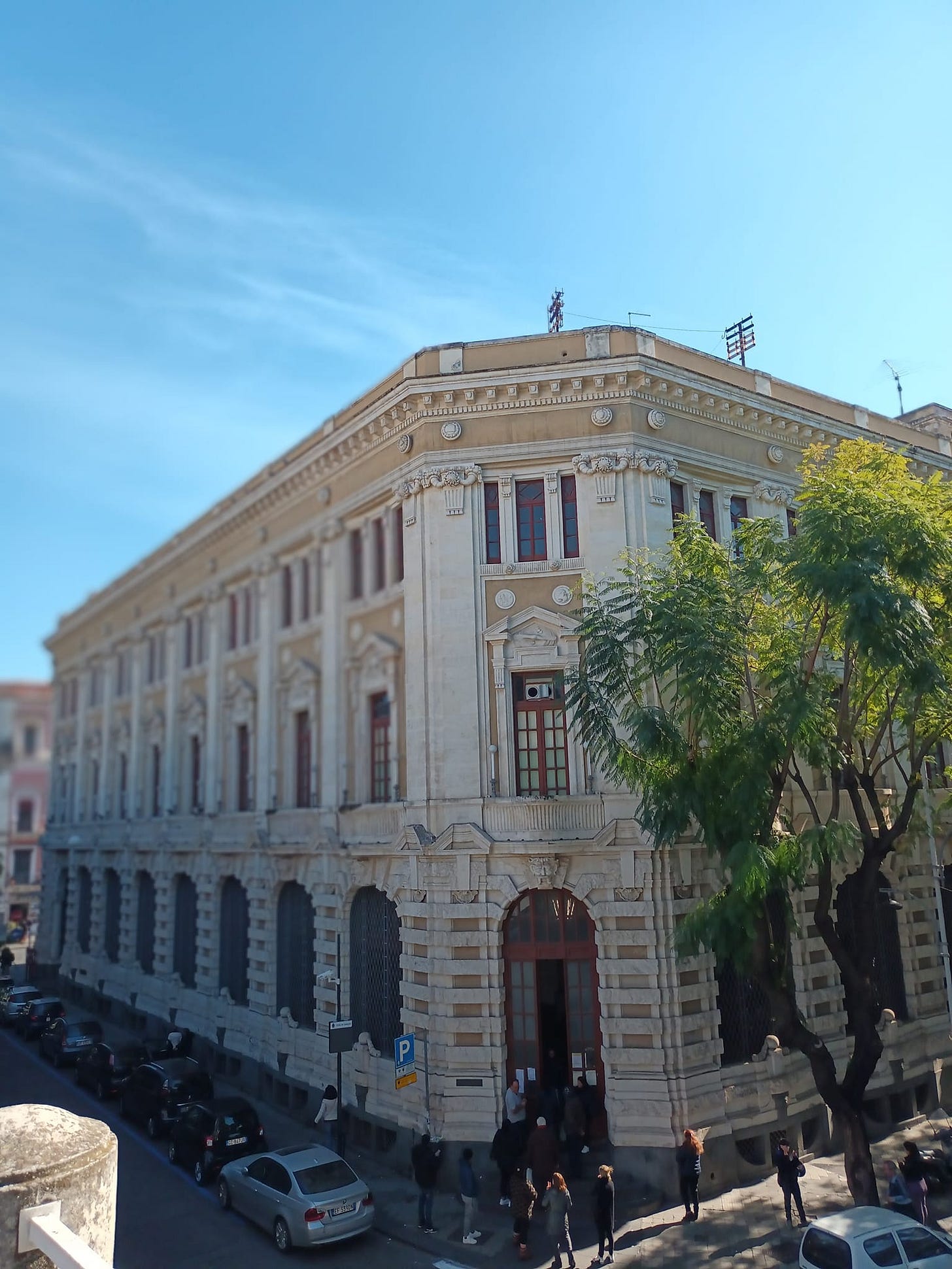Today I went for a little walk around middle class Catania, which was instructive. I wanted to look at the building where the lawyer Petrocchi and his wife and daughter lived, or where I imagined them living, in my book The Chemist of Catania.
The area in question is quite near the Villa Bellini, which is a pleasant park, laid out, at a guess, after the annexation of Sicily to the Kingdom of Italy. ‘Villa’ in Italian means, among other things, a park; and this one is named after Catania’s greatest son, the composer Vincenzo Bellini (1801 – 1835), the creator of Norma, and other unforgettable bel canto operas, who died so tragically young. The park has a sort of Risorgimento theme, as it is full of busts of famous Sicilians, as a way of celebrating Sicily’s great past and its contribution to United Italy. (The Pincio and the Janiculum in Rome have the same theme.) Just outside the park is the man who made United Italy possible, namely King Victor Emmanuel II. This statue is reproduced all over the peninsula.
In the area immediately to the north of the city centre are a few buildings that sprang up in the period known as ‘Liberal Italy’, some of which are quite fine, thought my poor photography does not do them justice, I fear. This is what the Italians call ‘lo stile Liberty’, famously exemplified by the Victor Emmanuel monument in Pizza Venezia in Rome, though I think these domestic examples are rather finer.
There are very few buildings in the Fascist style in Catania, and none that are worth looking at. In the Fascist era they were still sticking to ‘lo stile Liberty’, as exemplified in this best example of the style in Catania, or possibly anywhere in Italy, the Post office, built in the 1920’s.
The construction of beautiful public buildings was a government obsession, and a way of reminding the population of the new regime, whether that of United Italy or of Fascism. Public works were also seen as visible signs of progress, even under the Bourbons, who built a huge tobacco factory in Via Garibaldi (as it was not then called) as a sign of their commitment to industrial progress. The other thing that governments liked to build were model prisons. In the middle of the best part of Catania is Piazza Lanza, home to the prison.
There is not much to see from the outside, except a high wall. This is the place where a lot of the male relatives of characters in The Chemist of Catania are spending time. No doubt when Piazza Lanza was built it was seen a s sign of enlightened, humane and progressive values. The prison today does not have a good reputation, sadly.
The architecture of late nineteenth century and early twentieth century Catania is interesting, if you like that period, as I certainly do, but it also tells us something else; you cannot construct a United Italy with a few nice buildings, or instil a sense of patriotism and liberalism by the same method. These buildings stand out as heroic failures. The march of progress met its end here; the buildings are monuments to a failed project.








